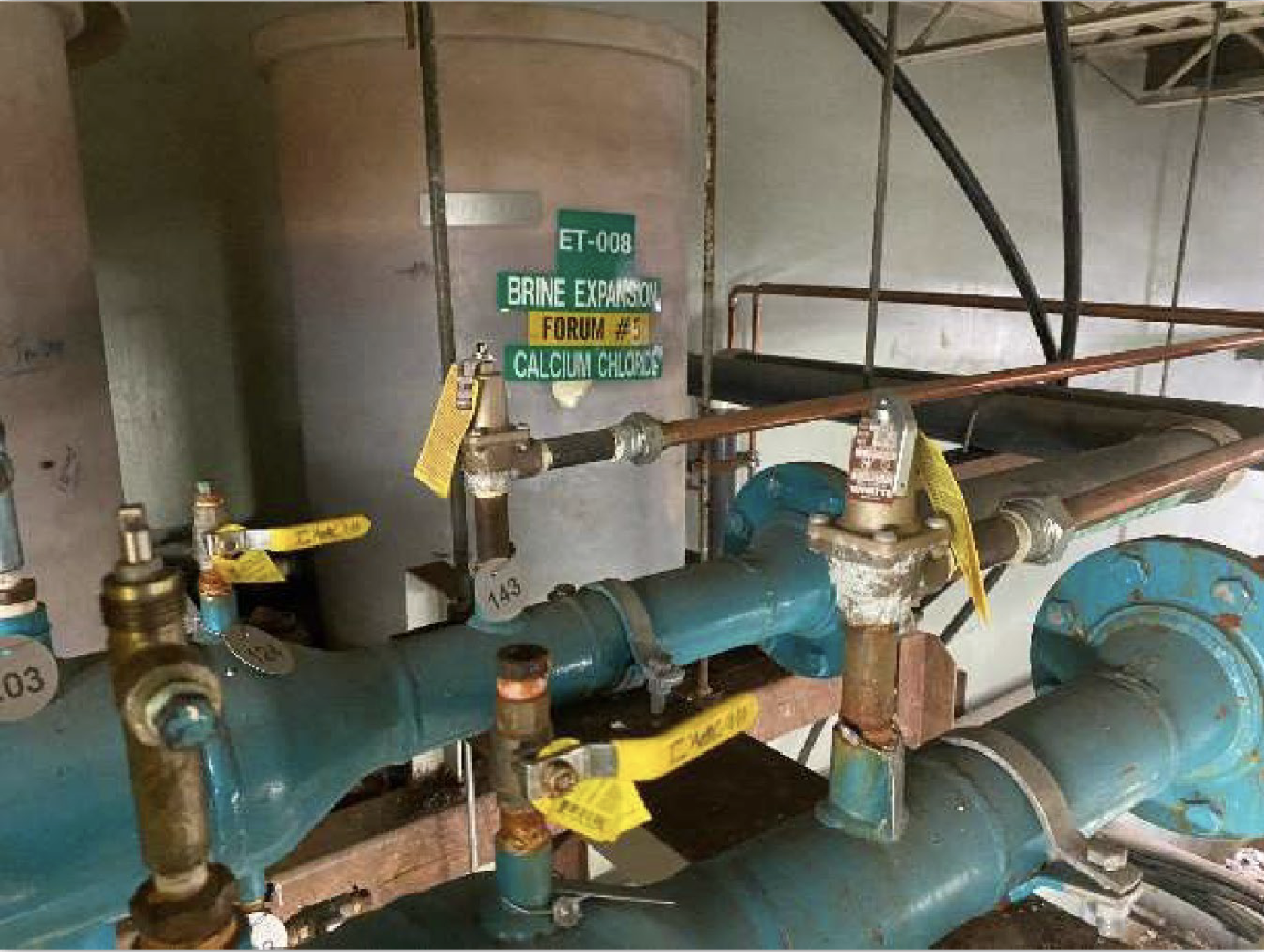 An internal failure of a heat exchanger caused ammonia gas to leak through and absorb into the circulating liquid brine for the underfloor loop. The ammonia within the liquid brine spilled out of the expansion tank, pooling within an open sump in the mechanical room. The heat exchanger needed to be replaced as it was not repairable.
An internal failure of a heat exchanger caused ammonia gas to leak through and absorb into the circulating liquid brine for the underfloor loop. The ammonia within the liquid brine spilled out of the expansion tank, pooling within an open sump in the mechanical room. The heat exchanger needed to be replaced as it was not repairable.
The failure of the exchanger was internal between the ammonia hot gas side and the calcium chloride liquid brine side. This caused ammonia gas to escape, be absorbed by the brine side, and escape out of an open-to-atmosphere expansion tank. The heat exchanger was isolated and stopped the flow of ammonia gas over to the brine side, and as a result, there was no underfloor brine heating available to the ice rinks affected as the pump was locked out and isolated.
The heat exchanger failure was caused by an internal tube failure due to corrosion caused by a failure to maintain brine chemical and system levels, which allowed oxygen to attack metal internal surfaces. Internal corrosion caused by the lack of brine system maintenance is the most likely cause of the failure.
CLICK HERE for the full report













